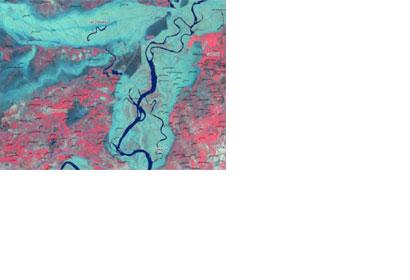On 16 July 2014, UN-SPIDER's Regional Support Office in Nepal, ICIMOD, received a "Special Achievement in GIS (SAG) Award" at the ESRI International User Conference (Esri UC) in San Diego, California, honouring its innovative use of Esri's geographic information system (GIS) technology for addressing mountain issues in the Hindu Kush Himalayas.
“The award recognizes and honours ICIMOD’s contribution in using GIS technology to leverage geospatial information resources for addressing the pressing developmental challenges of the mountain region of the Hindu Kush Himalayas,” said Basanta Shrestha, Director of Strategic Cooperation at ICIMOD. “ICIMOD, along with its regional and international partners, have successfully applied geospatial and allied technologies for understanding glacier dynamics in the context of climate change, forest fire monitoring with SMS alerts, land cover change assessment for natural resources accounting, disaster information management and flood early warning system, and agriculture monitoring for food security analysis, among others.” During the Conference, ICIMOD coordinated and participated in two SERVIR technical workshops, environmental showcase and demo theatres, and special exhibits in the Map Gallery.
Other prizes were assigned to organizations from around the world for innovations and involvment in areas such as agriculture, natural resources, cartography, climate change, defense and intelligence, economic development, education, government, health and human services, telecommunications, and utilities.
The International centre for Integrated Mountain Development (ICIMOD) is one of UN-SPIDER's Regional Support Offices. Its Member States include the eight countries of the Hindu Kush Himalayan region – Afghanistan, Bangladesh, Bhutan, China, India, Myanmar, Nepal, and Pakistan. ICIMOD hosts the SERVIR-Himalaya programme supported by USAID and NASA for improved environmental management and resilience to climate change by strengthening end-users’ capacity to apply geospatial and earth observation information for development decision-making.

